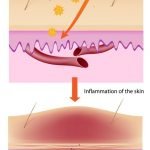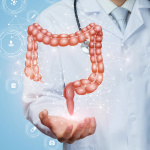Naturopathic Perspective – Spagyric Herbal Extracts: Exploring the Energetics and Vitality of Plant Medicine
IAN SPOHN, ND
Throughout human history, many methods for utilizing the healing properties of plants have evolved. Herbal medicine extraction has gone from the simplicity of chewing herbs (either for topical or internal use) to the specific mathematics tincture extracts that target specific compounds. Each method of making herbal medicine has its relevant advantages and disadvantages.
One of the most sophisticated methods of creating herbal extracts is by using a combination of the constituents of the whole plant along with potentiation of its individual, energetic signature. These types of extracts, known as spagyrics, were developed by alchemists, and the term “spagyric” was first coined in the 16th century. Alchemists of the time wanted to create an herbal extract that included a plant’s complete healing essence. This essence included both the physical aspects of the plant’s chemical constituents and its individual “spirit.” Before considering the potential merits of spagyrics, however, it’s fair to ask the question: Why do we extract herbs at all?
Water and Alcohol Extractions
The first practitioners of herbal medicine likely broke down medicinal herbs through mastication. This technique later evolved into herbal infusions and decoctions that used water as the solvent. Compared with eating fresh herbs, teas have benefits and drawbacks. One benefit of a tea is the ease of administration, especially to an infant or very sick person. Infusions also allowed dried plants to be saved and restored to a condition amenable for human ingestion. There is an obvious disadvantage, however. Water as a solvent fails to extract many of the plant’s beneficial compounds. For example, a water extraction of milk thistle seed would be almost completely ineffective.
While infusions and decoctions still have their place, most herbs are given today as tinctures. The advantages of this method are enhanced preservation, improved extraction, and convenience of use. The use of alcohol in a tincture serves as a preservative, allowing herbs to be extracted fresh and stored for extended periods in a stable, compact, and liquid dosage form. Alcohol also serves as an excellent solvent. Many of the medicinal compounds found in plants are poorly soluble in water, yet these phytochemical constituents can be readily extracted with alcohol. Using a combination of water and alcohol, in a ratio suited to the plant, allows for a more complete extraction of the relevant water and/or alcohol soluble compounds.
Is There More to the Whole Plant?
Even a proper-strength water/alcohol ratio will fail to extract every therapeutic element from a plant. After having been macerated, soaked, and pressed to expel every virtue it will readily yield to an alcoholic menstruum, spent marc is usually disposed of with the assumption that what remains of the plant is of no further use. There is, however, reason to believe this assumption may not be valid.
Consider Phytolacca decandra, a well-known medicinal plant. Besides saponins, mitogens, and antiviral proteins,1 Phytolacca accumulates manganese,2 an essential trace mineral necessary for cartilage formation. Manganese also has other unique therapeutic properties, even when taken in small amounts on its own. In his proving of Manganum aceticum, Samuel Hahnemann even demonstrated some of these benefits. Manganese, however, whether in crude or homeopathic dosage, would not be expected to be extracted from Phytolacca when using a typical water/alcohol tincture process.
The Spagyric Method
Similar to Phytolacca, all medicinal plants likely have a unique profile of trace minerals, heavy metals, and so-called tissue salts, which may indeed account for some of their therapeutic properties. However, most of these constituents are not soluble in alcohol or water. It is for this reason that alchemists developed the spagyric tincture method. They thought the spagyric method captured a more holistic extract of the plant.
Herbal Alchemy
Medieval alchemists believed the composition of a medicinal plant had 3 categories: sulphur, mercury, and salt. They conceived these elements not as periodic but as chemical categories that broadly corresponded to a conceptual body, mind, and soul. Alchemists defined these elements as follows:
- Sulphur: volatile, oily, and resinous constituents, chemicals typically insoluble in water but extracted in ethanol.
- Mercury: water-soluble constituents.
- Salt: insoluble minerals and salts, such as manganese and magnesium phosphate.
A traditional alcoholic tincture can extract the “sulphur” and “mercury” elements, but how is the insoluble “salt” extracted? In the alchemists’ view, missing the salt element corresponded to roughly 1/3 of a medicinal plant’s holistic value. Hoping to extract the “spirit” or “genius” of a medicinal plant, the alchemists developed the spagyric process. Beneath the mystery of alchemical shrouding, making a spagyric tincture essentially involves 2 additional key steps when compared to a non-spagyric tincture.
In the first additional step, the spent marc is strained from the liquid extract and combusted to ash. The combustion serves a dual purpose of releasing the salts, minerals, and metals from the plant’s intracellular compartments and produces ash composed primarily of potassium carbonate. Once created, the ash component is then reincorporated into the liquid portion of the extract.
In the second additional step, which is known as “recirculation,” the combined liquid and ash is repeatedly evaporated and condensed. This process was initially developed and used by alchemists in their attempts to transmute different metals into gold. Paracelsus, a 16th century physician known for his developments in the spagyric method, believed the continual evaporation and precipitation to mimic the natural process of rain.
The modern spagyric process serves an entirely different, more scientifically validated function. During the recirculation process, potassium carbonate from the marc’s ash begins to react with the plant’s oily residues to form water-soluble micelles, much like the process of making soap. This activity forms liposomal nanoparticles. These liposomal nanoparticles essentially result in greater extraction of the full spectrum of the plant’s phytochemical compounds because of how they enhance the bioavailability of components that are poorly absorbed by the body. This is especially true for those active constituents that are insoluble in water.
Are Spagyrics Homeopathy?
The remarkable correspondence between many plants’ herbal and homeopathic indications, like Calendula and Chelidonium, which seem equally helpful for the same purposes in crude and homeopathic forms, calls into question what makes a medicinal plant therapeutic. Homeopathy notes that when plants contain a preponderance of a specific mineral, the homeopathic indications for that mineral tend to match those of the plant. Some have even hypothesized that plant remedies might work primarily because of the cell salts they contain.
Earlier, I talked about Phytolacca, a plant rich in manganese, and its relation to the homeopathic remedy Manganum. According to the modern homeopath Jan Scholten, the mental picture of Manganum is an excessive desire to please others, which – when frustrated by a lack of recognition – eventually results in a mood of implacable bitterness.3 This is intriguing when compared to the mental picture of the homeopathic Phytolacca, that of a mother who becomes exhausted and indifferent to matters of personal delicacy after giving too much of herself to her children, a feeling often externalized in the form of the remedy’s well-known breast problems.3 One may also compare Manganum’s famous keynote “better from lying down” with the description of “general prostration” attributed to homeopathic Phytolacca.3
Homeopathy commonly notes these kinds of parallels between plants and minerals. An example of this is Schüssler’s proving of Kali Sulphuricum, where he remarks upon its astounding similarity to Pulsatilla.4 The crude plant Pulsatilla contains surprisingly large quantities of potassium sulfate. Clarke’s Dictionary of Practical Materia Medica even refers to Kali Sulphuricum as “Schüssler’s Pulsatilla.”4
A dose of Pulsatilla in low potency contains traces of potassium sulfate, akin to taking a dose of Kali Sulphuricum 6X. Perhaps this explains why these 2 remedies have similar indications, like “thick mucus discharge.” How do we explain then that Pulsatilla 200C – or Kali Sulphuricum 200C – can treat these kinds of discharges? The well-validated phenomenon of homeopathy would seem to suggest that while a plant’s chemical profile may serve as a valuable signature to reveal its therapeutic use, it may not be the amount or even the presence of these active constituents that provide its therapeutic action. This leads us to the question: What are the specific elements of an herbal extract that are the most therapeutically beneficial?
Tincture, Low-Dose, or Spagyric Herbal Extract?
Active constituents in plants are real and bear upon their scientifically validated actions. A bottle of aconite tincture is fatal if consumed, whereas an equivalent volume of Aconitum 200C is not. This demonstrates that the phytochemicals in a tincture influence the indication, contraindication, and therapeutic properties of botanical medicine. Spagyric extracts seem to blur the modality line between botanical medicine and homeopathy. This line becomes even more obscured when considering the “low-dose” school of herbalism. Matthew Wood is a renowned herbalist who claims, in some cases, to cure disease with herbal tincture doses as low as a single drop per day.5 The low-dose strategy is not because the herb is toxic, but because there is a thought that the essence, the plant’s vital energy, seems to be more critical than the isolated, active constituents of the plant.
There are certain situations where standardized extracts of plants seem to work best, for instance, when Crataegus monogyna is standardized to contain a high content of oligomeric procyanidins. On the other hand, there are situations where a plant’s low-dose, or even homeopathic dose, initiates a healing response. A tonic herb like Polygonatum has relatively unknown active constituents but reportedly works wonders, even in minimal doses. So, while standardized botanical extracts speak to our need to provide evidence-based treatments, old-fashioned tinctures, especially spagyric tinctures, continue to honor the vitalist traditions of naturopathic medicine.
The spagyric extraction process was created long before the chemistry of lipophilic active constituents was known. Initially, the process was designed to extract something more ephemeral from the plant: its very essence. Today, we might refer to it as a plant’s energetic signature, or as some Indigenous traditions would say, the healing spirit of the plant. It remains an open question whether the advantages of spagyric extracts depend more on the formation of nanoparticles to enhance constituents’ bioavailability, the alchemical capture of some ineffable holistic essence of the plant, or both. There is an important place in our therapeutics to continue to consider these kinds of questions, and to keep working to find the best medicine available to help our patients heal.
References
- Mills SY, Bone K. Principles and Practice of Phytotherapy. Toronto, ON: Churchill Livingstone; 2000.
- Pollard AJ, Stewart HL, Roberson CB. Manganese Hyperaccumulation in Phytolacca americana L. from the Southeastern United States. Northeast Nat. 2009;16(Special Issue 5):155-162.
- Scholten, J. Homeopathy and Minerals. Utrecht: Stichting Alonnissos; 1999.
- Murphy, R. Nature’s Materia Medica. 3rd ed. Blacksburg, VA: Lotus Health Institute; 2006.
- Wood, M. The Book of Herbal Wisdom: Using Plants as Medicines. Berkeley, CA: North Atlantic Books; 1997.

Ian Spohn, ND, graduated from NUNM in 2016 with an additional certificate in homeopathy. He has worked as a classical homeopath in private practice in Colorado Springs, Colorado, and currently works as a product design specialist for Grato Holdings, Inc. in Woodbine, Iowa. In addition to his interest in the historical study of alchemy, he is passionate about current regulatory issues facing the practice of homeopathy and is a proponent of the dietary work of Weston A. Price.









